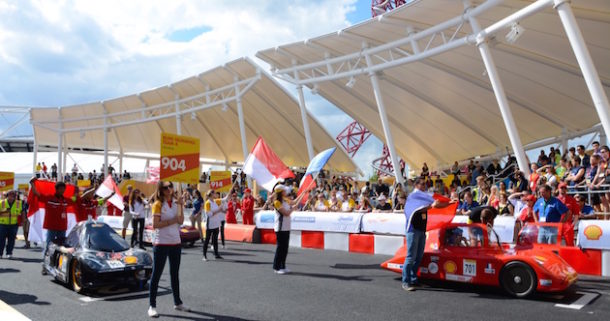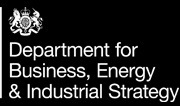
Event review: Winning Eco-marathon Vehicle Achieves 7,362mpg
The winning vehicle at the 2016 Shell Eco Marathon held in London’s Olympic Park from 30 June to 3 July achieved 7,362mpg (2,606.4km/litre). As if that wasn’t enough of an achievement, this year’s event even included a race between the eco cars…
The Shell Eco Marathon is a competition that challenges student teams from around the world to create the ultimate energy-efficient vehicle.
The winning vehicle in the Prototype challenge was a compressed natural gas car from team Microjoule-La Joliverie of France, making it the most efficient combustion engine.
The second-placed vehicle in the Prototype challenge was another French team, TED from Toulouse, which featured a petrol-engine and achieved 6,497mpg (2,300.1km/l).
Equip UMH won the alternative fuel class with 4,395mpg (1,555.9 km/l) from an ethanol-fuelled car. Italy’s H2politO won the hydrogen class with 737.0km per cubic metre, and Spain’s ECO-DIMONI won the battery electric category with 747.2km per kilowatt hour.
The overall record for the most economical petrol-powered car was set by Microjoule in 2010 with an incredible 10,652mpg (3,771km/litre) – a figure yet to be beaten (the circuit in London didn’t help with breaking this record as it featured a significant incline).
The Prototype cars are designed to be driven as far as possible using the least energy. There’s also the UrbanConcept challenge, which features vehicles that look more like normal city cars complete with equipment such as lights and windscreen wipers. Yet another French team, Lycee Louis Delage, won the 2016 UrbanConcept category; the petrol-engined car achieved 1,259mpg (445.7km/l).
Indonesian team BUMI Siliwangi from Bandung triumphed in the grand finale of the first Shell Eco Marathon Drivers’ World Championship with a battery-electric car in a race comprised of UrbanConcept category cars.
More than 200 student teams from 29 countries around the world gathered at London’s Queen Elizabeth Olympic Park to see who could complete the 2.2-km Eco-marathon track with the least amount of fuel – as well as having the opportunity to compete in the Drivers’ World Championship.
The teams designed and built cars using seven energy types including petrol, diesel, natural gas, alternative fuels, battery electric and hydrogen. Students had a year to design, build and test their vehicle before the track challenge.
There were many examples of innovative vehicle design and construction, ranging from cars being 3D printed to being made out of materials such as wood or composites comprised of natural fibres.
There was also an autonomous Eco Marathon vehicle which drove round the track without any driver input – even though Formula 1 star Kimi Raikkonen sat in the driver’s seat as a ‘passenger’. The ‘Autonomous UrbanConcept Vehicle’ was equipped with cutting-edge software developed by Oxford’s robotics experts and used the same technology that underpins the Oxford RobotCar – the UK’s first autonomous car approved for public trials – and the LUTZ project, which is bringing autonomous pods to the pavements of Milton Keynes.
Apart from powertrain efficiency, aerodynamics, lightweighting and eco-driving, a key factor in the efficiency of the vehicles is the tyre choice. Michelin has worked with Shell on the Eco-marathon since 1985, using the event as a real-life laboratory for developing more efficient tyres – with the learning already transferred to the tyres that we can buy for our own cars.
The rolling resistance from a vehicle’s tyres can be responsible for using one tank of fuel out of five. The energy loss is due to deformation of the tyre, so Michelin has been focusing on ways to reduce deformation, using new materials and innovative design.
Michelin also provides tyres for Formula E, the racing series which features efficient all-electric powertrains, but with somewhat higher speeds than the Eco Marathon vehicles. Unlike Formula 1, Formula E cars only have one type of tyre, which has to work effectively in wet and dry weather, therefore being more relevant to the vehicles that we drive in real-life. And of course all tyres have to achieve the conflicting requirements of grip, low rolling resistance and longevity. In order to achieve Michelin’s target of reducing the rolling resistance of tyres by 1% per year between 2010 and 2030, tyres of the future are likely to be of a larger diameter but narrower. The vehicles in the Eco Marathon Prototype challenge, with their bicycle-like tyres, demonstrate the aerodynamic, rolling resistance and lightweight benefits of narrow tyre width.
Tyre efficiency is not just improving for cars and ‘eco cars’, but also for other vehicle categories such as trucks; Michelin claims that its tyres can save truck operators in the region of £100,000 per year on fuel costs – and if they don’t achieve such savings, Michelin will pay back the difference.
Another recent Michelin innovation is the CrossClimate, the first-ever summer tyre to obtain the 3PMSF winter certification for snow usage; achieving good performance in summer as well as in snow is surely the ultimate challenge for a tyre designer?
Yet even in this year’s Eco Marathon the vehicles had to achieve conflicting requirements such as 7,362mpg economy figures as well as achieving speed and efficiency during the racing on the Sunday (most vehicles passed the finishing line with hardly any energy remaining) – all of which would not have been possible without efficient tyres.
And what did the spectators make of the event, complete with its ‘eco racing’? The crowd seemed to thoroughly enjoy the proceedings, but even more interesting was the atmosphere in the ‘garages’ with the 200 student teams. Although there were teams from around the world, many were from Europe, and the overall feeling was one of different countries and cultures working together in a positive way to develop a more sustainable future for younger generations. This was an ironic contrast to the backdrop where one week earlier the UK had voted to leave Europe and become more isolated.
The Eco Marathon was part of Shell’s Make the Future event, which was all about bright ideas for tomorrow’s energy challenges. The event included a wide variety of attractions for all the family, ranging from interactive exhibits providing education about our energy needs to the 107mpg Shell Concept City Car to the event ‘finale’ on the Sunday, a performance on stage by singer Pixie Lott.





